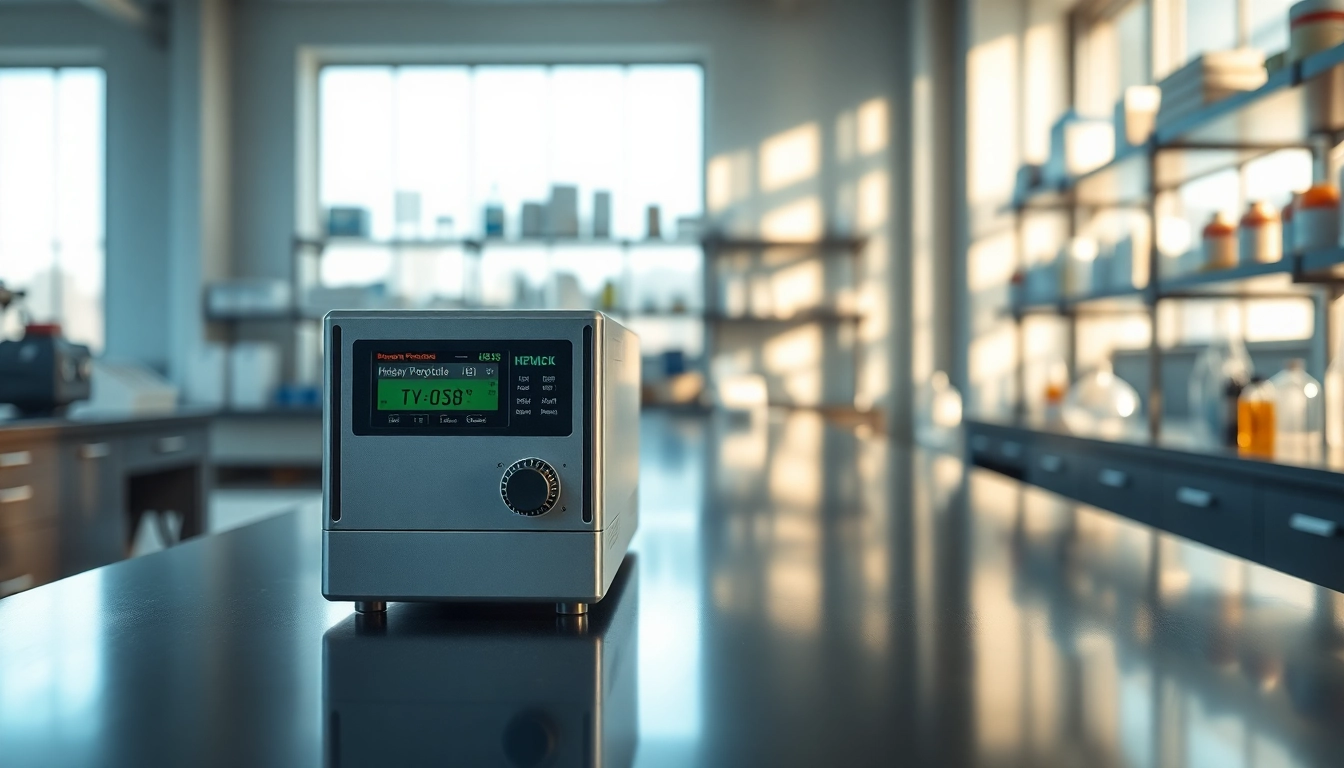Introduction to Hydrogen Peroxide Detectors
In an ever-evolving landscape of industrial and domestic safety measures, the importance of precise monitoring cannot be understated. Hydrogen peroxide, a versatile chemical widely used for its disinfecting properties, also poses potential risks if not handled correctly. This is where a Hydrogen Peroxide detector comes into play, serving as an essential tool for ensuring both safety and compliance in various environments.
What is a Hydrogen Peroxide Detector?
A Hydrogen Peroxide detector is a specialized device designed to instantly measure the concentration of hydrogen peroxide in the air or in a specific environment. These detectors leverage advanced sensor technologies to provide real-time data about hydrogen peroxide levels, thus ensuring that safety regulations are adhered to and reducing the risk of exposure to harmful concentrations.
Why Use a Hydrogen Peroxide Detector?
The necessity for Hydrogen Peroxide detectors stems not only from safety concerns but also from regulatory requirements across different industries. In environments such as healthcare facilities, laboratories, and food processing plants, the potential for airborne hydrogen peroxide can be significant. Exposure can lead to respiratory issues, skin irritation, and even long-term health effects. By integrating these detectors into their safety protocols, organizations can monitor hydrogen peroxide levels effectively, individuals can protect their health, and businesses can remain compliant with occupational safety standards.
Key Features of Reliable Detectors
- Sensor Technology: Modern detectors often employ electrochemical or optical sensors that provide high precision and rapid response times.
- Calibration Capabilities: A reliable hydrogen peroxide detector should allow for easy calibration to ensure ongoing accuracy.
- Portability: Many models are designed for portability, allowing users to conduct spot checks in various locations.
- Alarms and Alerts: Effective detectors come equipped with audible and visual alarms to alert users to dangerous concentrations.
- User-Friendly Interface: Intuitive control panels make these devices easier to operate, even for those without specialized training.
Applications of Hydrogen Peroxide Detection
The applications of hydrogen peroxide detectors extend across diverse sectors, highlighting their importance to safety and health.
Industrial Uses of Hydrogen Peroxide Detectors
In industrial settings, hydrogen peroxide is often used as an oxidizing agent in manufacturing processes, especially in the textile and chemical industries. Monitoring ambient air quality is crucial to minimize exposure risks. Hydrogen peroxide detectors facilitate compliant operational practices by providing continuous monitoring, which is vital for protecting workers from exposure that can lead to acute and chronic health issues.
Laboratory Settings: Ensuring Safety
Laboratories frequently utilize hydrogen peroxide for its strong antimicrobial properties. In these settings, ensuring that concentrations remain within safe limits is essential for personnel safety. Hydrogen peroxide detectors are indispensable tools in laboratory environments due to their ability to deliver real-time data. High-level readings can trigger automatic ventilation systems or alert personnel immediately, enabling swift intervention and minimizing risk.
Home Health and Hygiene Applications
As the demand for effective home disinfectants increases, hydrogen peroxide has become a popular choice among consumers. Homeowners can benefit from hydrogen peroxide detectors, particularly in scenarios where large amounts are stored or used, such as in cleaning regimens or health-oriented applications. By monitoring their indoor air quality, users can maintain a safe living environment, especially in homes with children or vulnerable individuals.
Choosing the Right Hydrogen Peroxide Detector
With various options available in the market, selecting an effective hydrogen peroxide detector requires thorough consideration of specific factors.
Factors to Consider When Selecting a Detector
- Detection Range: Understand the concentration levels you need to monitor and choose a detector that can measure within that range.
- Response Time: Look for detectors with quick response times to ensure that you receive timely alerts.
- Durability: Choose devices that are constructed from robust materials suitable for your particular environment, be it industrial or domestic.
- Power Source: Consider whether you need a battery-operated unit for portability or a plugged-in model for continuous operation.
- Certification: Ensure that detectors meet relevant safety standards and are certified for use in your industry.
Top Brands and Models Reviewed
While several brands manufacture hydrogen peroxide detectors, a few stand out for their reliability and performance. Consider models such as:
- Model A: Known for its rapid response time and high accuracy, making it excellent for laboratory use.
- Model B: A durable design suited for industrial applications, complete with online monitoring capabilities.
- Model C: A portable unit ideal for home use, featuring simple calibration processes.
Price vs. Performance: Making the Right Investment
When it comes to investing in a hydrogen peroxide detector, balancing price and performance is crucial. While cheaper models may seem appealing, they often lack the sensitivity and reliability required for effective monitoring. On the other hand, high-end models, while costing more upfront, can save money in the long run by preventing unsafe exposure and compliant operational practices. Evaluate your needs carefully and choose a detector that offers the best value proposition relative to your requirements.
Installation and Maintenance Tips
Ensuring that your hydrogen peroxide detector operates effectively and reliably requires proper installation and routine maintenance.
Proper Installation Procedures
To achieve optimal performance, correct installation of the detector is essential. Follow manufacturer guidelines closely, and consider these tips:
- Mount the detector in an area where hydrogen peroxide is most likely to accumulate, such as near cleaning stations or storage areas.
- Avoid installing the detector in locations prone to high vibrations or direct exposure to sunlight to extend the device’s lifespan.
- Ensure that air circulation is adequate, as detectors rely on airflow to provide accurate readings.
Routine Calibration and Checks
Calibration of the hydrogen peroxide detector is vital for ensuring accuracy. Regularly follow these steps:
- Check the manufacturer’s guidelines for specific calibration timelines.
- Utilize calibration gases to adjust readings according to established baselines.
- Document calibration results to maintain comprehensive records for compliance audits.
Common Troubleshooting Techniques
If your detector indicates abnormal readings or fails to operate, employing troubleshooting techniques can resolve many common issues. First, check the power source and connections. If the system is receiving power, verify that the sensors are properly calibrated and clean. For persistent issues, referring to the user manual or contacting customer support may be necessary to ensure the device functions safely and effectively.
The Future of Hydrogen Peroxide Detection Technology
As technology continues to advance, hydrogen peroxide detection systems are evolving to become more sophisticated and integrated.
Emerging Trends in Sensor Technology
The future of sensor technology in hydrogen peroxide detection is promising, with emerging tools utilizing advanced materials and nanotechnology. These innovations may result in detectors that are not only more sensitive but also capable of detecting lower concentrations, thereby enhancing safety protocols across various applications.
Advancements in Detection Accuracy and Reliability
Improvements in data processing algorithms and sensor technology are expected to enhance detection accuracy significantly. Innovations such as machine learning could help detectors learn from previous readings, enabling them to differentiate between noise and real signals more effectively.
Integrating Detectors into Smart Systems
As homes and workplaces become more automated, integrating hydrogen peroxide detectors into smart systems is a logical next step. These detectors may soon communicate with HVAC systems or other smart devices to automatically adjust air quality controls based on sensed concentrations, creating safer environments in real-time.



